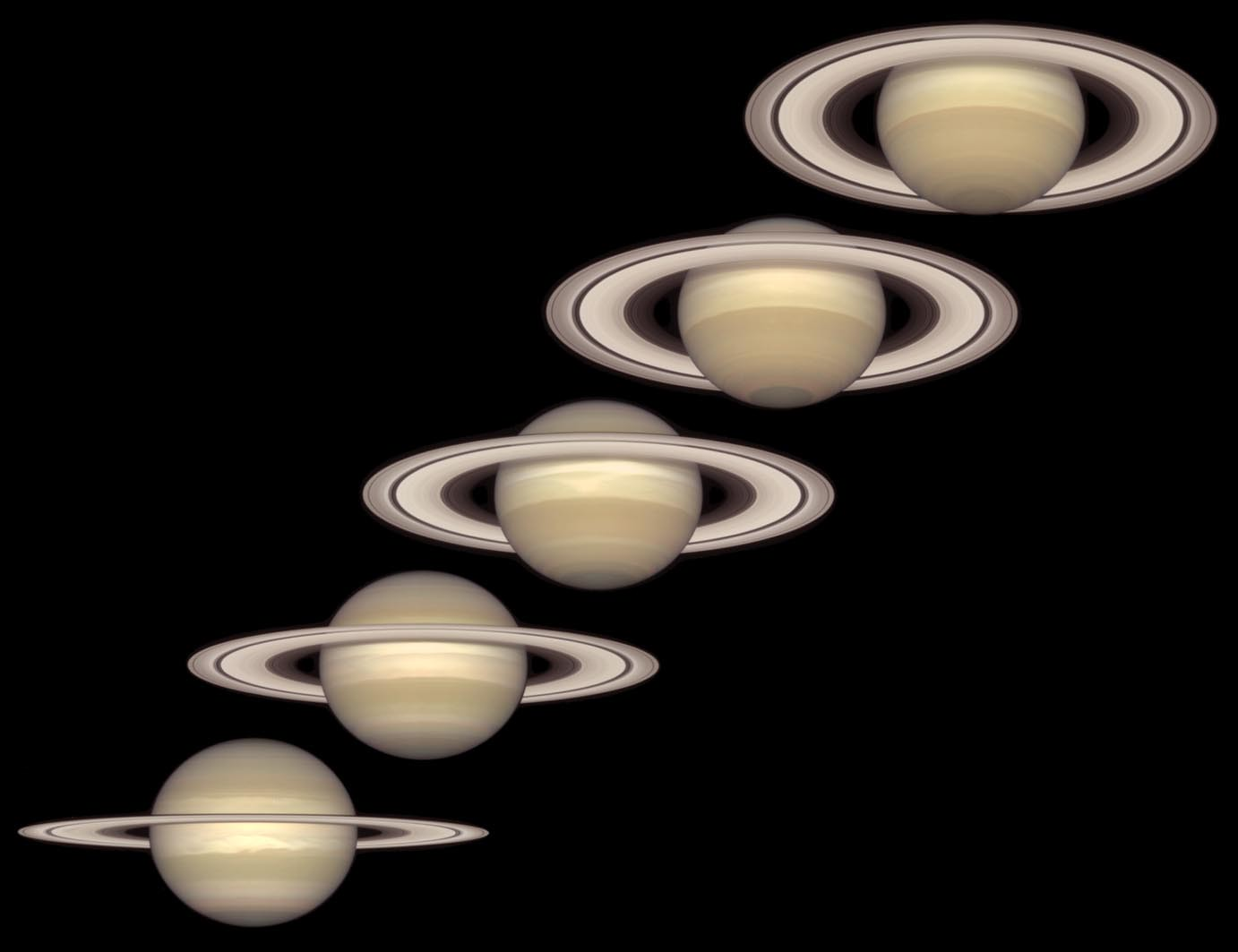Saturn’s rings will be edge on to the Earth late this month, making them effectively impossible to see, at least with backyard equipment. However, it will be hard to witness it, because Saturn is now so close to being directly behind the Sun, even spotting the planet is challenging, and will get harder still through the month.
ADVERTISEMENT
If you have managed to catch the current planetary parade, you might have noticed something odd. Saturn is usually very easy to distinguish from the other planets or moderately bright stars by the presence of rings, visible in small telescopes and hinted at through an elongated shape in binoculars. However, that’s been hard to spot recently.
To understand why, you need to know that we are actually very lucky to be able to see Saturn’s rings – one of the great sights of the Solar System – at all.
It’s likely, albeit still debated, that we can only see the rings because of an accident of timing, with evidence they may have only formed around 400 million years ago, making them possibly younger than sharks. That aside, we also only get a good view of them because Saturn’s axis is substantially tilted compared to its orbit, at 26.7 degrees more so than the Earth.
The rings are aligned with Saturn’s equator, so most of the time they are angled to catch the Sun’s light, which also means we get a broad view of them. However, as Saturn turns with its seasons, twice in its 29.4-year orbit the Sun shines directly on its equator, just as it does for Earth on the equinoxes. This also means that the Sun is hitting the rings edge-on. That edge is exceptionally thin – just a few tens of meters compared to the rings’ almost 100,000 km (60,000 miles) width, so it’s almost impossible to see at our distance. Earth and Saturn’s orbits are very close to the same plane, so even if the rings were more illuminated, all that’s pointing at us is that thin edge.
If Saturn’s orbit was circular, this edge-on state would occur every 14.7 years. However, Saturn whips through the closer part of its orbit a fair bit faster than the slow march further from the Sun, so instead the gap between these events alternates between 13 and 16 years. The last time the rings appeared to disappear was in 2009. Earth passes through the plane of the rings this month on Sunday, March 23, but the effect lasts for a while either side.

Saturn as photographed by the Hubble space telescope from 1996 to 2000 as the angle of the rings to Earth and Sun opened up.
Earth’s and Saturn’s orbits are not perfectly in the same plane, even though they are close, and sometimes that misalignment means we cross the rings’ plane three times in quick succession, for example in 1995-96, making it look like they are almost edge-on for 10 months or so.
ADVERTISEMENT
Saturn’s rings look particularly magnificent about halfway between these events, when they’re spread out so we can see them the most. Nevertheless, the change between maximum orientation and normal doesn’t look particularly dramatic – the rings are great most of the time. On the other hand, anyone who checked the rings over the last few months would have experienced a discombobulation. You’ve been able to see a thin sliver of ring, but the whole planet just doesn’t look right.
By chance, the Saturnian equinox happens to be occurring just as we pass on the opposite side of the Sun. It was a similar situation last time – it’s almost as if Saturn’s getting changed and using the Sun’s brightness to block our prying eyes.
You can watch the rings reappear as Saturn comes out of the Sun’s glare in April and May, although only as a morning object. By the time it returns to the evening skies, the rings will be back, although the view will continue to get better for years to come. As this happens, we will be seeing the opposite sides of the rings from what has been visible for the last 16 years.
There’s often a surprising compensation for Saturn looking less beautiful than usual, one we’ll miss this year because of the timing. The apparent disappearance of the rings is a great time to look for things in the Saturnian system we can’t normally see because of their brightness, a little like how the solar corona was discovered during total eclipses. During previous periods when the rings were edge-on, astronomers discovered 13 moons, as well as the faint outermost E-ring.
Source Link: Saturn’s Rings Will Disappear From View This Month – Here's When And Why